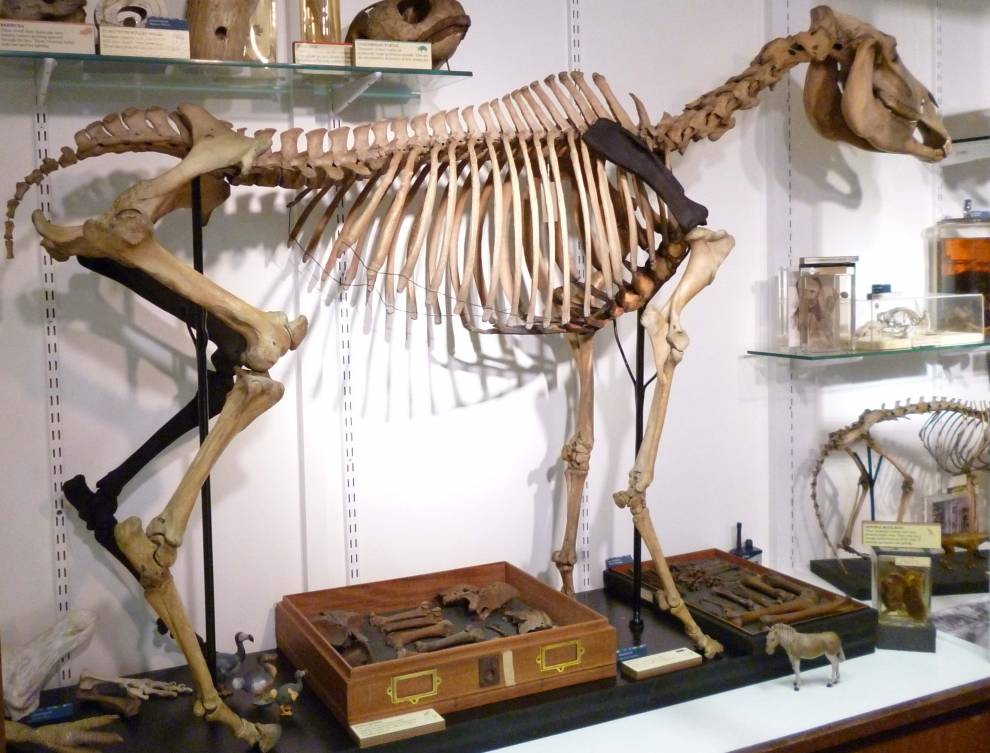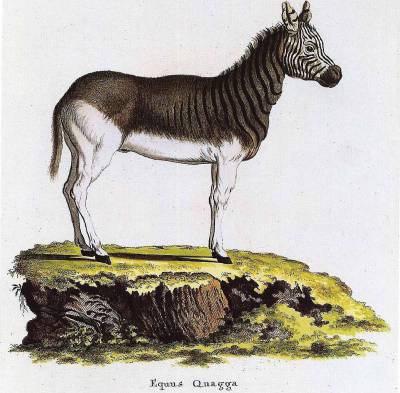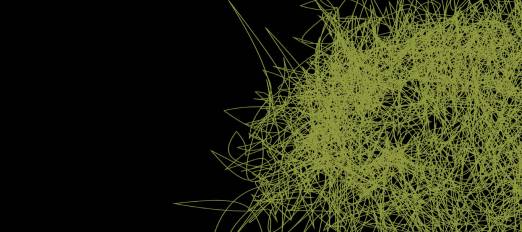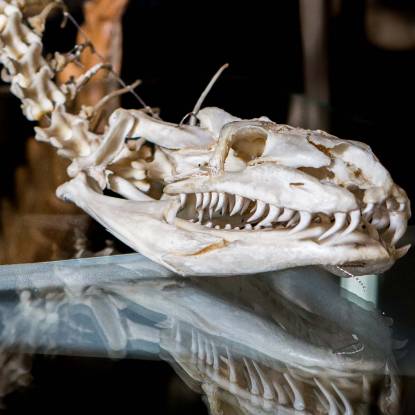Quagga Skeleton
The Grant Museum houses one of only seven quagga skeletons in existence. Quaggas were a type of South African zebra with fewer stripes than other species. They were wiped out in the 1880s through hunting by westerners for their unusual pelt and as they competed with farmers' livestock for grazing – the last individual died in Amsterdam Zoo on 12th August 1883.
The quagga skeleton was remounted and conserved as part of the 2014-15 Bone Idols: Protecting Our Iconic Skeletons project.

It was long thought that this skeleton was that of a normal zebra. In fact, it was believed that the Grant Museum was home to two zebra skeletons. In 1972, rumours that one of these zebras was a quagga resulted in an examination of the specimens. It turned out that the Museum did indeed have a quagga, but the other “zebra” turned out to be a donkey.

The other six quaggas are scattered across the world, in Holland, Germany, France and the USA. None remain in South Africa.
For a full list of all specimens and details of the Quagga Project visit the website.
Recent study of the DNA remaining on museum skin specimens (skins are more common in collections than skeletons) has shown that quaggas were not a distinct species but were a subspecies of the plains zebra (Equus burchelli). The Quagga Project in South Africa is working to selectively breed plains zebras with few stripes on their hindquarters, until the same color pattern as the quagga is achieved. This is an extremely controversial project as critics make the point that the result wouldn’t actually be a quagga genetically, it would just be a plains zebra artificially selected to look like one. They claim that the money spent on the project would be better directed at species that are still in need of conservation.
Scientists could potentially attempt to extract DNA from bone marrow and remaining taxidermy specimens and use it for cloning by injecting this DNA into a zebra egg.
Read more about the Quagga - the rarest skeleton in the world - on our blog.
 Close
Close




